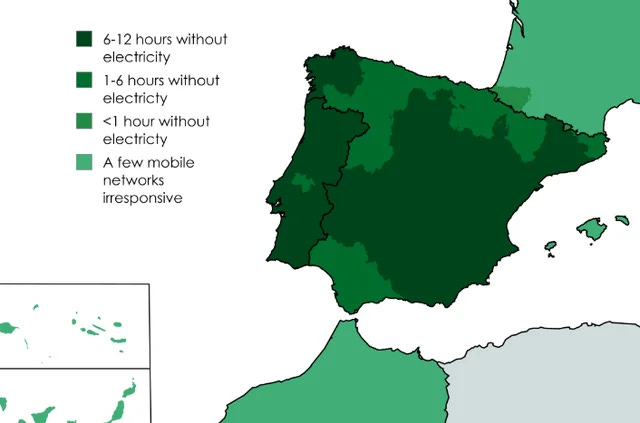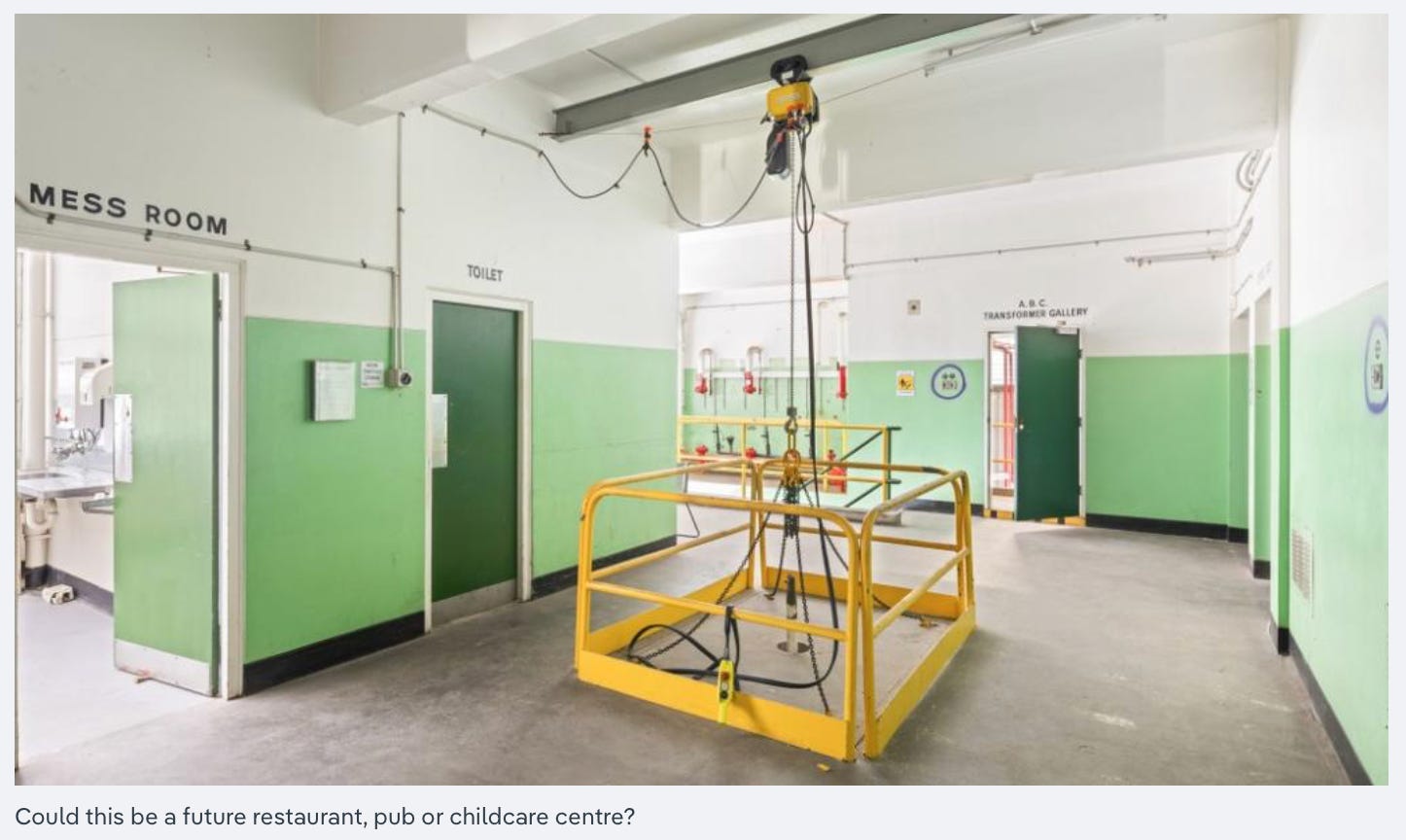It’s been a little since we’ve posted anything (there’s some longer form stuff coming soon!), but here’s a real grab bag of things to snack on in the meantime.
But first, an announcement!
I found four (4, quatre, quattro, cuatro, vier, cztery, dört) branded Currently Speaking mugs from last year’s trivia event.
If you’d like one, tell us your best energy-related story in the comments to this article. The funniest, stupidest, strangest or weirdest story that you’ve heard (and can tell publicly).
Leave a comment before Sunday 18 May, and we’ll mail out the mugs to the four best stories. If you don’t have any stories to tell but want to get involved, vote on the best story you read by throwing it a like!
Iberian Drama

In case you missed it, most of Spain and Portugal experienced a blackout on the 28 April.
System-wide blackouts are rare but obviously severe, and investigations are underway but will take some time to get to the root cause of the event and identify all contributing factors.
But that of course hasn’t stopped Sky News uncles, op-ed columnists and other opinionated gronks from hurling themselves at conclusions — concisely summarised by Lauri Myllyvirta as “hurr durr solar doesn't have inertia”.
Never ones to let a media opportunity go wasted, Australian nuclear pundits were also quick to pile on, pointing out that more synchronous nuclear would have been beneficial and drawing parallels with the NEM. This despite the fact that Spain’s grid is currently ~20% nuclear, which is roughly equivalent to what the Australian system would be running with the 7 GW of definitely real nuclear sites proposed by Dutts (RIP).
Yes, Spain was indeed running with a high penetration of renewables at the time, and the investigation might well find that the grid was being operated in an insecure state at the time of the trip thanks to limited inertia from inverted-based renewables – the Spanish grid operator Red Eléctrica has previously consulted with AEMO about operating high renewable-penetration grids.
But this is a timely reminder that a) power systems are incredibly complex things — possibly the most complex systems we’ve ever built as humans — b) things go wrong occasionally, despite our best efforts, and c) system-wide blackouts have been occurring since well before high renewable-penetration grids and the concurrent lower inertia.
And while, yes, blacking out the entire Iberian Pensisula is not a good thing, it still didn’t rate top ten (try harder next time).
So while we await the Red Eléctrica report into the blackout1, here’s some of the more interesting things we’ve read on the blackout:
A very long and detailed explanation of a likely sequence of events, backed up with lots of references and data.
A good piece explaining ‘sub-synchronous oscillations’ and frequency collapse.
A further piece exploring the relationship between sub-synchronous oscillations and system inertia (spoiler — more inertia is not necessarily helpful in all circumstances).
Talking about wrecking things…
Check yourself before you wreck yourself
Have you ever thought about how a wind farm is decommissioned (other than posting photos of blade graveyards and shouting at renewables advocates in all caps)? No, nor had I.
Australia’s oldest commercial wind farm, Codrington Wind Farm outside Port Fairy Victoria was commissioned in 2001 and is facing end of life decisions come 2027. The owners, Pacific Blue, have decided that repowering the site with larger modern turbines is not economical, and will decommission/demolish the wind turbines and sell them for scrap.
As Rachel Williamson reports over at Renew Economy2 there are three ways to decommission a wind turbine — “delicately un-build it with a crane, cut a wedge from the base and topple it like a tree, or use explosives to blow it up from the bottom.”
This last option is the most exciting, obviously. But what exactly does decommissioning wind farms via implosion look like? Here’s a compilation video, including a wonderfully synchronised musical section (I was hoping for 1812 Overture, but alas).
And because the above video wouldn’t embed correctly, please enjoy this additional video featuring the explosive demolition of wind turbines set to a musical track of ‘instrumental Christian rock reserved exclusively for use in second tier promotional material’.
Speaking of decommissioned assets…
An electrifying deal?
This “former heritage electrical substation”3 went under the hammer in April, with a list price circa A$12.5 million.
Located in the heart of Woolloomooloo, the building is zoned for RE1 Public Recreation, so no, you mightn’t be able to live in it, but you could open a restaurant, bar, galley or… a childcare centre…?
Hope your children enjoy a wide range of industrial contaminants in their sandpit.
One thing about real estate ads that never fails to disappoint is the random vaguely aspirational quotes intended to induce excitement. Like this doozy from one of the pinstriped-suit pirates:
“It’s the type of thing you’d buy and work out what to do with later, because it will be worth 10 times as much in the future — it’s just so iconic.”
I often impulse purchase property for 7 digits and figure out my commercial plans later — how hard could running a hospo joint be anyway? The list price includes decontamination costs right? Asking for a friend.
Anyway, if all this heritage electrical substation talk got you hot under the collar, Wikipedia has an exceedingly long article on the nearby Taylor Square Substation No. 6 (which is actually heritage listed).
Speaking of redundant assets…
Smart Meters
This is a story which has no real point and barely passes as a cohesive anecdote, but it’s been living in brain rent free so I’m evicting it with the hopes that it finds residence in someone else’s brain.
In 2014 I moved to Melbourne and into a sharehouse in Richmond4. Coming from Brisbane, one of the things that struck me about Melbourne’s inner suburbs was both the significantly higher density of houses, and the blinking smart meters positioned next to the front door of many of the worker’s cottages.
Victoria had only recently completed the Advanced Metering Infrastructure rollout, deploying interval meters – better known as ‘smart meters’ (or Type 4A in AEMO parlance) — to all residential homes. Victoria was the first, and to this day only, state to completely deploy smart meters to all households. The jury is still very much out regarding the benefits of this, although the AEMC has set a 2030 for all residential homes to be fitted with smart meters.
Other than the novelty of seeing the meters often prominently displayed right next to the front door (compared to the ubiquitous type 6 ‘basic’ or ‘accumulation’ meter usually buried inside a switchboard out of sight), was the fact that there was active opposition to smart meters — enough to move beyond the pages of a cooker website or community Facebook group and into an actual political party People Power Victoria/No Smart Meters which ran candidates in the November 2014 Victorian state election.
To the shock of almost no one, they received only 0.04% of the primary vote and were deregistered in 2017, before the next state election.
More shockingly, there was a party which received an even lower primary vote – The Basics Rock’N’Roll Party received just 0.03% of the primary vote. If The Basics doesn’t ring a bell, you might know Wally De Backer’s other musical endeavour a little better – Gotye.5
Yep – Gotye’s band mates launched a political party at the height of his musical career which was somehow less popular than a bunch of cookers.
Anyway, most normal people would probably remember the November 2014 state election because it was the first election of Dan Andrews and his memorably controversial cancellation of the East West Link contract.
Oh, and you’ll be pleased to know that much like my other favourite cookers, Stop These Things, Stop Smart Meters Australia is still going strong, posting regularly. Perhaps they could form a coalition of cookers and move that primary vote decimal place one notch to the right.
The timeline they have to beat is CS Energy’s Callide C4 investigation, which took them nearly 3 years to release 👏
Australia’s second-best NEM-focussed publication 😉
Honestly what kind of fucking garbled real estate agent speak is this?
I moved on the first weekend of March, which also saw the Hazelwood mine fire – unrelated I swear!!
Fun fact – Wally has all but retired the Gotye nom de plume and the Gotye YouTube channel is (deliberately) demonetised, and the views on his most famous music video, Somebody That I Used to Know, are approaching 2.5 billion with a B. How’s that for commitment to principles.







It was late 2016, and I was working at a battery orchestration company. We had a virtual power plant, about 100 residential batteries (not big now, but big at the time!), in South Australia as part of an early trial. A massive storm was forecast to hit, and since these batteries were wired for backup, we figured it made sense to pre-charge them in case of a blackout.
I quickly wrote some custom code to issue a fleet-wide charge command. This was our first attempt at dispatching the whole fleet to simultaneously charge like this - risky, and fully dependent on my hastily written script. I ran it then we watched the logs, expecting a quick, clean response within a couple of seconds.
A clean response did not happen.
We started losing communications to many systems. Others started charging, then stopped entirely. Some were reporting grid voltage of zero. I was worried my code had somehow taken out the entire fleet right as the storm was picking up.
Then one of our BD folks came sprinting down the stairs and said: “All of South Australia has gone black.”
My first thought, being a young naive engineer, was that I had just caused a state wide blackout.
I remember popping down to the news agency while on holiday on the Great Ocean Road, at the height of Smart Meter Fear, and being astonished to find three different magazines with Smart Meters Are Gonna Get Ya front-pages. Two were overt weirdo publications, but one was just a regular electronics hobbyist mag!